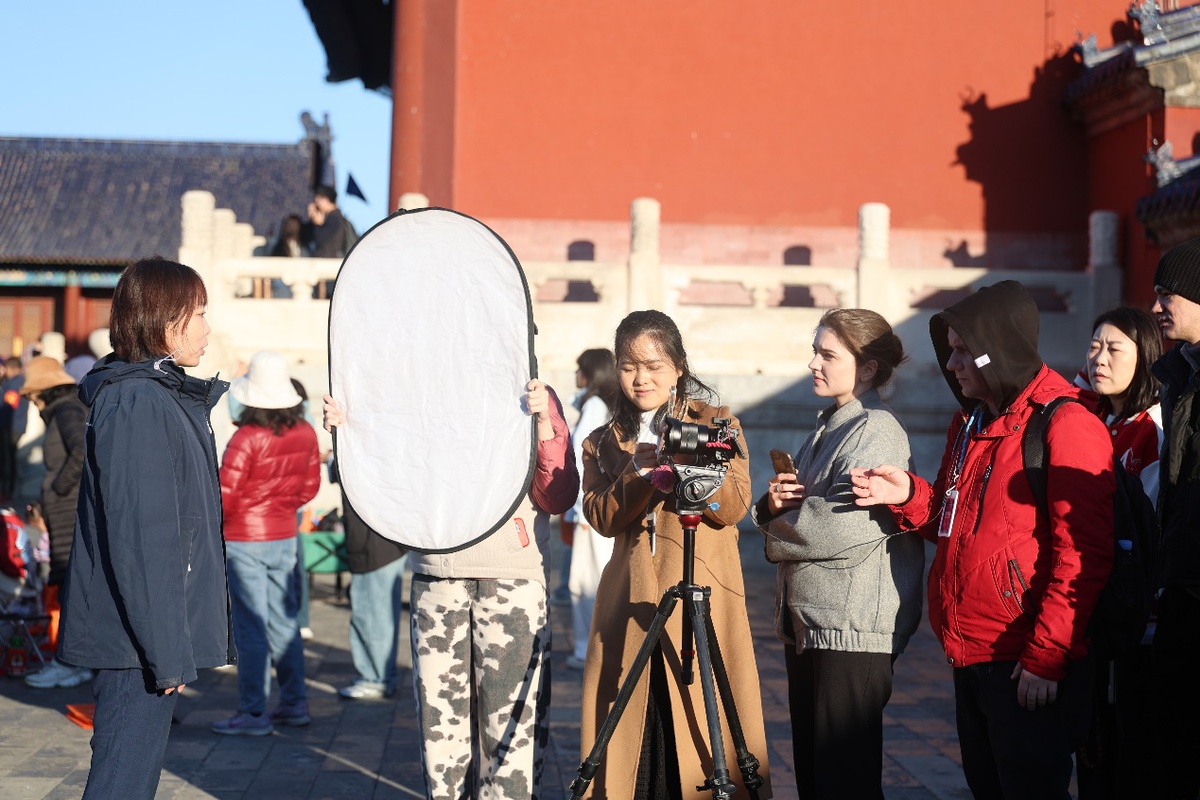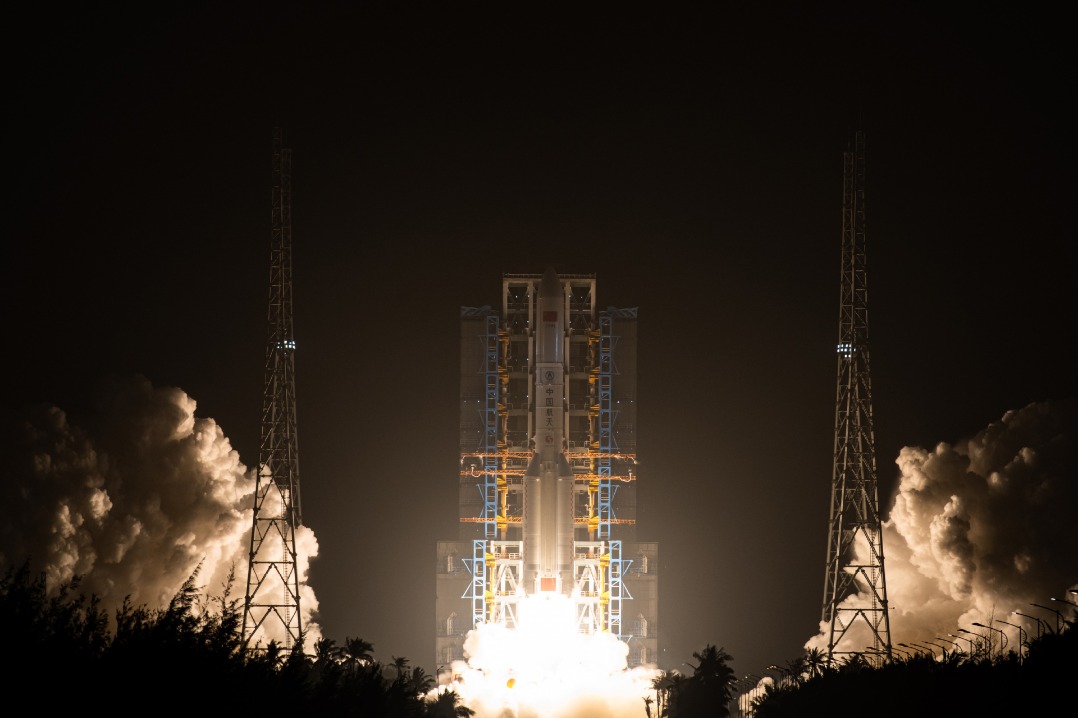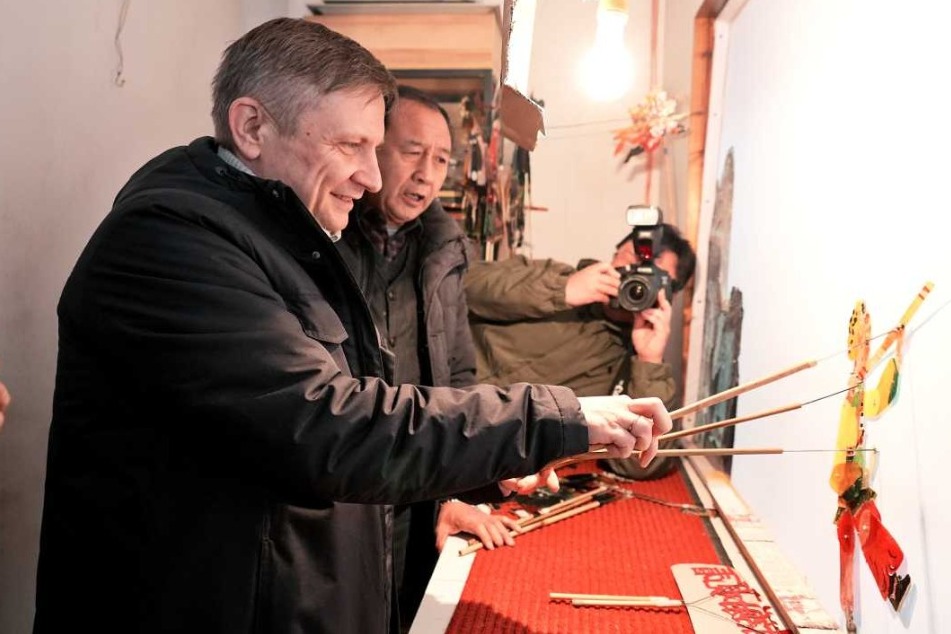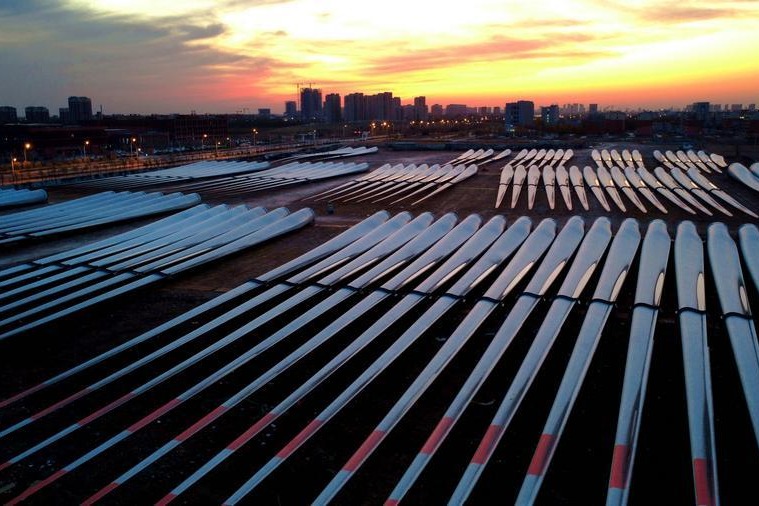Foreign TV crews tour Beijing's Temple of Heaven


The Temple of Heaven was originally constructed in the 18th year of the Yongle reign of the Ming Dynasty (1368-1644), covering a total area of 273 hectares.
The main structure, the Hall of Prayer for Good Harvests, is located in the north-central part of the park. It served as the site where emperors of the Ming and Qing (1644-1911) dynasties conducted prayer ceremonies for abundant harvests. Each spring, the emperor would hold grand ceremonies here, praying to heaven for favorable weather and bountiful harvests.
The design of the Hall of Prayer for Good Harvests embodies the concepts of revering heaven and worshiping the gods, the round sky and square earth. The hall is circular, symbolizing the ancient view of the shape of the sky; the roof is blue, representing the color of the sky; and the 12 golden pillars inside the hall represent the months of the year.
The Temple of Heaven is not only a religious and political center but a cultural symbol that has influenced architectural design and urban planning in Beijing. Its design and function reflect ancient society's understanding of the unity of heaven and humanity, rituals, and authority.
























